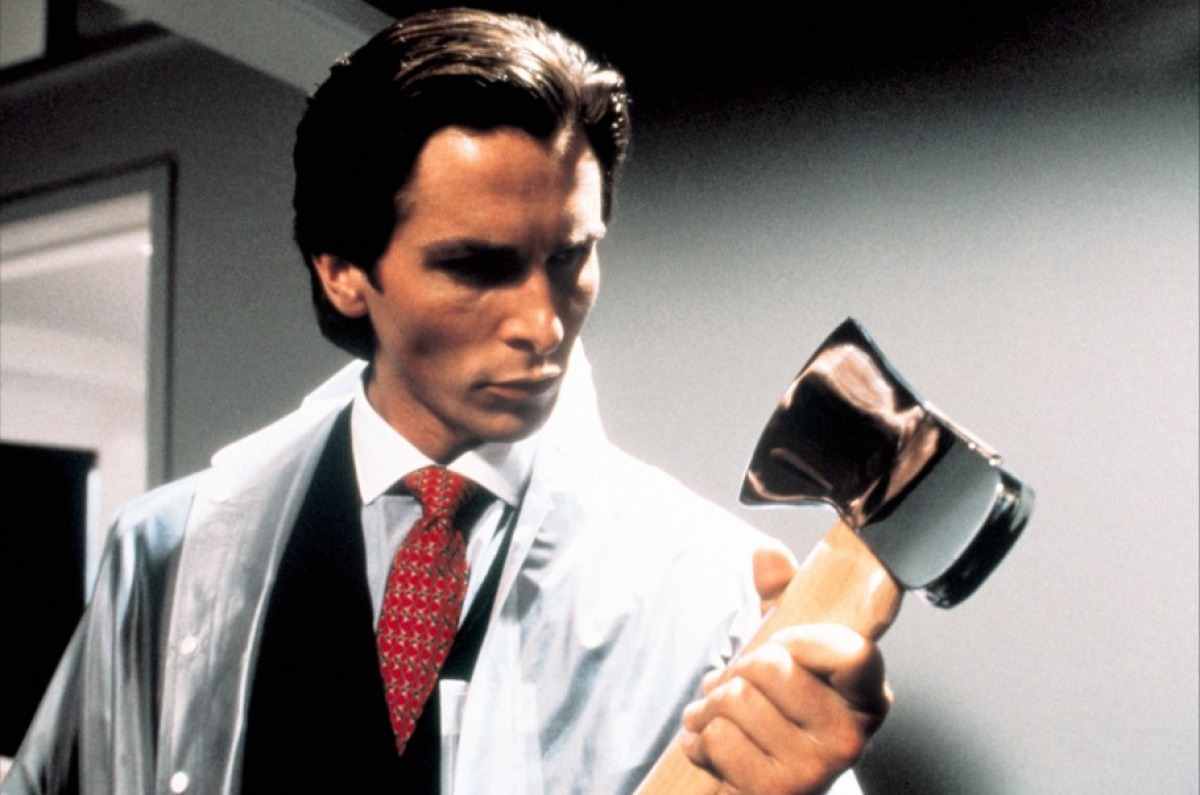“American Psycho” (2000)

Mary Harron’s “American Psycho,” released in 2000, is a provocative and satirical exploration of the excesses of 1980s Wall Street culture, consumerism, and the façade of the American Dream. Adapted from Bret Easton Ellis’s controversial novel, the film delves into the mind of Patrick Bateman (played by Christian Bale), a wealthy investment banker whose outwardly perfect life masks a dark and psychopathic persona.

Set in Manhattan during the height of the yuppie era, “American Psycho” introduces viewers to Patrick Bateman, a charming and outwardly successful young professional who exudes confidence and affluence. As he navigates through the superficial world of high finance, designer suits, and exclusive restaurants, Bateman’s inner turmoil and violent impulses begin to unravel beneath his polished façade.
Central to the film’s narrative is its critique of materialism and societal values. Bateman’s obsession with status symbols—luxury apartments, expensive clothing, and impeccable grooming—reflects a culture steeped in superficiality and the relentless pursuit of wealth. Harron’s direction juxtaposes scenes of opulence and excess with moments of brutal violence, exposing the moral bankruptcy lurking beneath the veneer of social respectability.

The character of Patrick Bateman serves as a chilling embodiment of narcissism and sociopathy. Christian Bale’s mesmerizing performance captures Bateman’s dual nature: charismatic and charming on the surface, yet harboring a profound emptiness and detachment from reality. Bale’s portrayal navigates the complexities of Bateman’s psyche, from his meticulous grooming rituals to his increasingly erratic and violent behavior, with chilling precision.
“American Psycho” also explores themes of identity and existential crisis. Bateman’s existential angst manifests in his futile attempts to distinguish himself from his indistinguishable peers, as well as his obsession with superficial details and the need for control. His interactions with colleagues, romantic partners, and victims highlight the fragility of identity in a world driven by appearances and conformity.

Harron’s direction is marked by its incisive social commentary and dark humor. The film’s stylized visuals and evocative soundtrack, featuring iconic 1980s pop songs, enhance its satirical portrayal of an era defined by excess and moral ambiguity. Harron’s decision to emphasize Bateman’s inner monologue, drawn directly from Ellis’s novel, provides insight into his fractured psyche while challenging viewers to confront uncomfortable truths about society’s values and priorities.
In addition to its thematic depth, “American Psycho” is notable for its controversial portrayal of violence and its impact on cultural discourse. The film’s graphic scenes of brutality and sadism sparked debates about censorship and artistic freedom, prompting audiences to grapple with the ethical implications of depicting such subject matter on screen.

The supporting cast further enhances the film’s exploration of social hypocrisy and moral decay. Notable performances by Willem Dafoe as Detective Donald Kimball, Jared Leto as Paul Allen, and Reese Witherspoon as Bateman’s girlfriend Evelyn Williams, provide layers of complexity to the narrative and deepen our understanding of Bateman’s psyche and the world he inhabits.
In conclusion, “American Psycho” remains a provocative and thought-provoking film that challenges viewers to confront uncomfortable truths about society, identity, and the pursuit of wealth. Mary Harron’s bold direction, coupled with Christian Bale’s transformative performance, has ensured that the film continues to provoke discussion and analysis decades after its release. Through its exploration of power dynamics, moral ambiguity, and the illusions of identity, “American Psycho” stands as a testament to the enduring relevance of its themes and its impact on the landscape of contemporary cinema.











